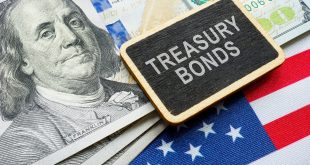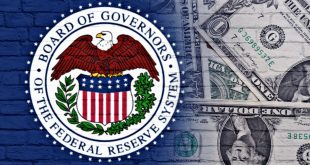The US Dollar, once a stalwart symbol of global economic stability, has found itself in a state of flux following the Federal Reserve’s recent decision to cut interest rates. This strategic move, aimed at stimulating economic growth, has had far-reaching implications for the currency’s value and its role in the international financial system.
The Fed’s Impact: A Double-Edged Sword
The Federal Reserve’s rate cut has created a complex dynamic for the US Dollar. On one hand, it has made the currency less attractive to investors seeking higher returns. This has led to a decline in demand for US assets and, consequently, a weaker Dollar. However, the rate cut has also raised expectations of economic growth and increased consumer spending. A stronger US economy could potentially bolster the Dollar’s value in the long run. The Fed’s delicate balancing act between stimulating growth and controlling inflation will continue to shape the Dollar’s trajectory.
Currency Pair Dynamics: A Shifting Landscape
The weakening of the US Dollar has had a significant impact on major currency pairs. The Euro, for instance, has gained ground against the Dollar, reflecting the European Central Bank’s more hawkish monetary policy stance. The British Pound has also appreciated, buoyed by the UK’s resilience in the face of economic challenges.
In contrast, the Japanese Yen has strengthened against the Dollar, driven by concerns about global economic growth and geopolitical tensions. The Bank of Japan’s continued easing measures have made the Yen a relatively attractive safe-haven currency.
Commodities and Gold: Benefiting from a Weaker Dollar
The decline in the US Dollar has had a positive impact on commodity prices. As the Dollar weakens, it becomes cheaper for foreign investors to purchase commodities priced in US dollars. This has led to increased demand for commodities such as crude oil, copper, and agricultural products. Gold, traditionally viewed as a safe-haven asset, has also benefited from the weaker Dollar. As investors seek to protect their wealth from market volatility, they have turned to gold as a hedge against inflation and economic uncertainty.
Geopolitical Factors: A Growing Influence
Geopolitical events can have a significant impact on currency markets. The ongoing tensions in the Middle East, for example, have supported crude oil prices and, by extension, the US Dollar. However, escalating geopolitical risks can also create uncertainty and lead to a flight to safety, potentially benefiting currencies like the Japanese Yen.
Uncertainty Persists
The US Dollar’s future remains uncertain, as a multitude of factors continue to influence its value. The Federal Reserve’s monetary policy, global economic conditions, geopolitical events, and currency market dynamics will all play a crucial role in shaping the Dollar’s trajectory. Investors and policymakers alike will need to carefully monitor these factors to navigate the complex landscape that lies ahead.
Also Read:
Intel’s Stock Surge: Further Hope Amid Economic Uncertainty
US Dollar steadies as investors digest S&P Global PMIs
US Treasury yields firm on Fed’s signals about gradual easing ahead
XAU/USD steadies above $2,600 on further rate cut hopes, Middle East tensions
 Noor Trends News, Technical Analysis, Educational Tools and Recommendations
Noor Trends News, Technical Analysis, Educational Tools and Recommendations





